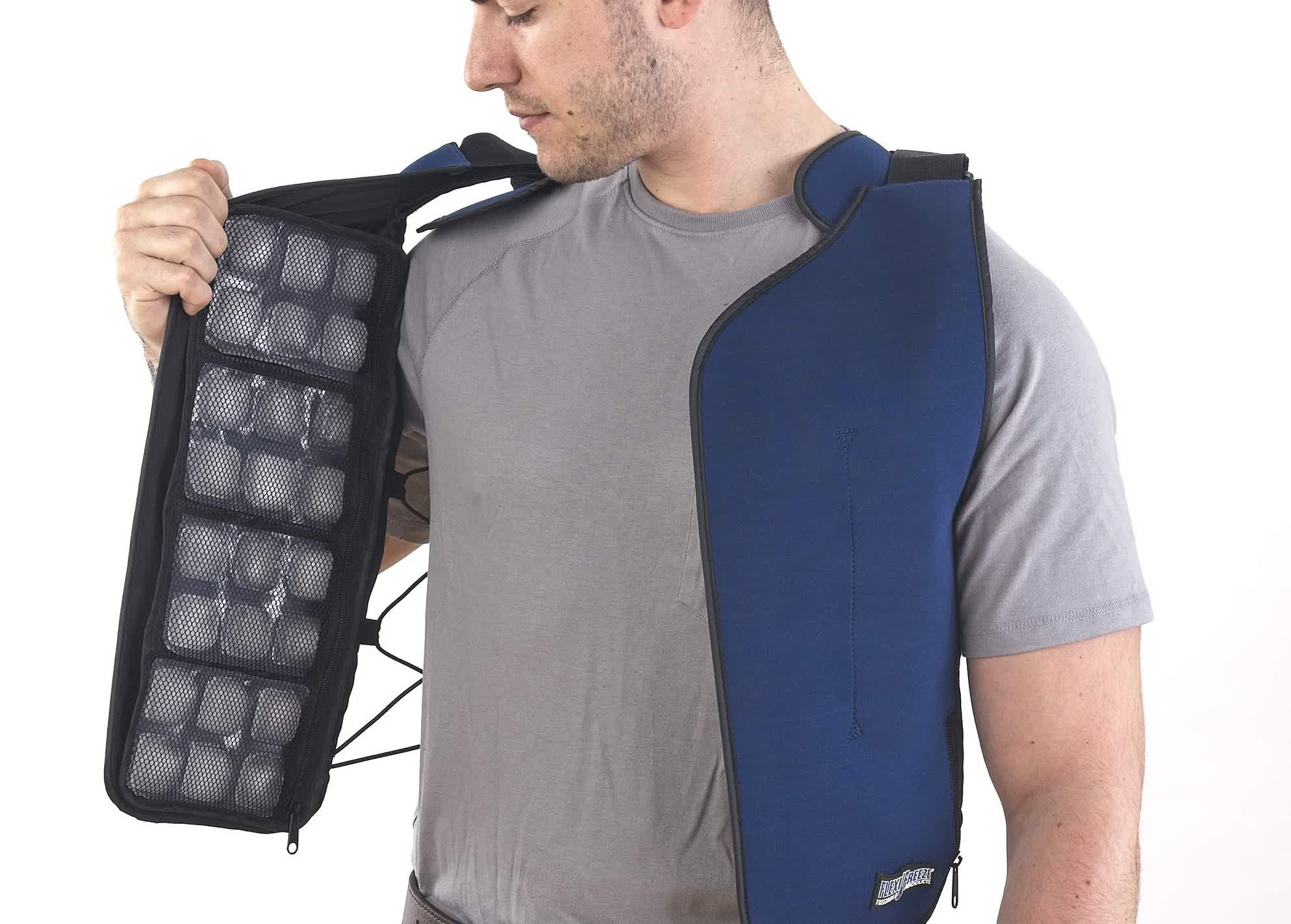In brief: The world is getting hotter, and that's a problem for everyone. In the US, heatwaves are proving lethal for millions of workers who perform their duties outside or in hot indoor areas, but some respite is being found in a technology that has been around for a long time: cooling vests.
According to data from the European Union's climate observatory, July was the hottest month ever recorded on Earth. There were abnormally high temperatures recorded on both land and sea, resulting in unbearable heat across much of the world.
Wired writes that hundreds of workers have died from environmental heat exposure in the US over the past decade. With temperatures continuing to rise, the danger is higher than ever. But cooling vests are helping mitigate some of the worst effects.
Many of these vests work in a simple but effective way: stuff them with packs of water ice straight from the freezer. These are flat and flexible to help with movement and bulkiness. They melt over the course of a day, keeping wearers cool for many hours.
Some vests forgo water in favor of phase change materials (PCMs), which transition from solid or semisolid to liquid as they absorb heat. These can have a higher melting point so they last longer. We've also seen vests with built-in water pumps; some are made from highly breathable fabric; and there are those that come with embedded fans.
In 2020, Sony released the Reon Pocket, which is essentially a wearable air conditioner. It can be used as a handheld to soothe your brow, though it's primarily designed to be placed just below a user's neck in a pocket knit inside special polyester fabric undershirts.

The most expensive cooling vests can cost almost $400, though some companies are providing them to their employees as part of the job.
Demand for cooling garments has skyrocketed recently as a result of the heatwaves; many manufacturers say they have orders fully booked out for months. Everyone from military personnel to factory staff, schoolyard supervisors, roofers, and fast-food workers are wearing them. Interestingly, even those locations where they would normally not be popular, such as Scandinavia, are seeing an increase in sales as residents used to the cold try to adapt to the heatwaves.
The vests aren't a miracle solution for everyone. It's been noted that their effectiveness can vary, and continuing to wear the same cooling packs after their contents have melted and become warm can make things worse. There have also been complaints from vegetable pickers about vests with built-in fans sucking vegetation against their clothes and being cumbersome.
With air conditioning units worsening the environmental crisis, it's predicted that solutions like cooling vests will become more commonplace in the future as temperatures keep on soaring.
